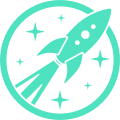Sometimes the best way to take a step back from the coding races is to turn off the lights, play music and dance.
At least, that’s what the engineering team at Clay does every Friday. Team Lead Luna Ruan explained that this long-running tradition, called “DJ Fridays,” is simply one element of a team culture rooted in connection and support; one that she and her peers are determined to keep around.
“As we’ve gotten bigger, we’ve made sure to keep this culture going strong,” she said.
Motivation is a key component of many engineering teams. For VP of Engineering Nate Clark, motivation is a “guiding principle” on his team at Clear Street, where engineers rely on collaboration to carry critical initiatives across the finish line.
“Projects aren’t siloed,” he said. “Instead, team members are empowered to jump into any part of the system to solve problems, fostering a collaborative environment.”
In embracing these practices and principles, engineering teams can cultivate cultures that stand apart from the rest. Software Engineer Kwasi Amanfi and his teammates at AnthologyAI have accomplished just that, creating a culture that enables every engineer to play a part in driving progress.
“Every team member’s opinion truly matters here, creating a space where everyone can thrive and contribute to our collective success,” he said.
Below, Ruan, Clark and Amanfi share more about the defining elements that make their engineering teams ones to join.
Diversified financial services firm Clear Street aims to modernize the brokerage system with its cloud-native clearing and custody platform, which is designed to minimize risk, redundancy and costs.
Describe your engineering team culture. How has it evolved over time?
Engineering is a team sport. It’s an interesting thought experiment to consider what the best possible team looks like. Take a moment to consider what the answer might be for you. I’d posit there’s no right answer for all situations, but there are commonalities — such as working with motivated team members.
Motivation is important because it leads to achieving great outcomes and a sense of accomplishment. This is my guiding principle for team culture at Clear Street.
Daniel Pink’s seminal book, Drive: The Surprising Truth About What Motivates Us, outlines three essential elements that spark motivation: autonomy, mastery and purpose. We enable autonomy by giving our teams the latitude to determine how to solve the business problems we face. Once we decide on a path, the team collaboratively figures out who will be responsible for each part of the solution, therefore tying in mastery. Purpose is intrinsic to the organization’s mission, but we continually look for opportunities to remind people of a project’s big picture and reinforce that it goes beyond just making money.
Describe a time when you saw your team culture at play.
It's challenging to pinpoint a single instance that encapsulates our team’s culture, as it reveals itself in countless everyday actions. Recently, we faced a significant blocker in rolling out a new product due to necessary modifications in a system unfamiliar to the team. In true spirit, one of our engineers stepped up and tackled the issue head-on, ensuring the launch stayed on track.
Our culture also thrives on innovation from self-initiated projects, often leading to substantial improvements in our processes and products. This culture of proactive assistance and mutual support creates a virtuous cycle. When everyone is committed to seeking opportunities to help one another, it not only drives individual success, but propels the entire team forward, ultimately leading to remarkable achievements and a cohesive, dynamic work environment.
“This culture of proactive assistance and mutual support creates a virtuous cycle.”
How does this team culture differ from others that you have experienced or heard about?
When teams truly embrace the tenets that drive motivation, they stand apart from teams at many other organizations. In such teams, there’s no need for micromanagement because members feel a sense of ownership and an intrinsic desire to push projects forward. Projects aren’t siloed; instead, team members are empowered to jump into any part of the system to solve problems, fostering a collaborative environment.
Moreover, internal politics are minimal, allowing for a more cohesive and focused team. Most importantly, this approach results in a happier, more fulfilled team that consistently achieves greater outcomes. In essence, a culture that prioritizes motivation and empowerment not only enhances productivity, but also creates a more positive and dynamic workplace.
Clay’s platform is designed to help RevOps and growth teams personalize outreach efforts, offering access to data enrichment tools and AI-powered research and composition capabilities.
Describe your engineering team culture. How has it evolved over time?
At Clay, we have a kind, creative and close-knit engineering team. We have quiet egos and growth mindsets and love tackling interesting problems together. We believe that caring for our people and creating an inclusive workplace goes hand in hand with building world-class products. As we’ve gotten bigger, we’ve made sure to keep this culture going strong.
“We believe that caring for our people and creating an inclusive workplace goes hand in hand with building world-class products.”
Our engineering team thrives on collaboration, and we’ve implemented several strategies to nurture this. We believe that everyone has something to teach and learn, so we lead with curiosity when communicating. Every project we work on is a team effort, and we frequently do pair programming to learn from each other. We collaborate often with other teams across the company, such as customer success and marketing, because diversity creates better products.
We’re a team with a diverse range of interests, and we love sharing these interests with each other. Our longest-running tradition is “DJ Fridays,” where we turn off the lights, play music and dance. We also enjoy office yoga classes, board game nights and having furry friends around the office.
Describe a time when you saw your team culture at play.
Recently, we iterated on our interview process to ensure our values truly shine through. We emphasize the importance of feelings, practicing compassionate communication, having a sense of agency and ownership, delivering world-class work and promoting quiet egos among our team members. By prioritizing these principles, we ensure that our candidates not only feel prepared for interviews, but feel heard and valued in the process.
This approach has fostered a positive and inclusive culture, enabling us to attract talent that aligns with our mission. It’s a reflection of our commitment to building a supportive environment for everyone involved.
How does this team culture differ from others that you have experienced or heard about?
Clay has a really high-caliber engineering team, but the thing that stands out the most to me is how people-focused it is. Everyone here is really empathetic, which makes the day-to-day work a pleasure. This care is also reflected in a lot of the perks that we have, such as amazing health insurance coverage for therapy and really great parental benefits. I love working at Clay and with all of my coworkers. I feel really lucky to work somewhere that values both technical excellence and a supportive culture.
AnthologyAI’s platform was developed to unlock access to ethical, efficient and accurate consumer data, which is obtained consensually from users of the company’s Caden app.
Describe your engineering team culture. How has it evolved over time?
As one of the company’s first in-house engineers, I’ve had the privilege of observing our team culture evolve from its earliest days. Our engineering team is collaborative, inclusive and innovation-driven. From the beginning, we’ve built our culture on the principles of open communication, continuous learning and mutual respect. Initially, our culture was more ad-hoc and fast-paced, with a strong focus on quickly building and launching products. As the team grew, we introduced more structured processes, including formalized code review practices, standardized workflows and documentation standards.
“From the beginning, we’ve built our culture on the principles of open communication, continuous learning and mutual respect.”
Describe a time when you saw your team culture at play.
We recently had to re-evaluate our roadmap mid-sprint due to shifting priorities. Despite the sudden change, our team pivoted smoothly, effectively switching and prioritizing the new projects.
The Keys to a Successful Transition
- Open dialogue: “We held an impromptu meeting involving all stakeholders to discuss the new priorities. This open dialogue ensured everyone understood the reasons behind the shift and could voice any concerns or suggestions.”
- Team alignment: “Daily stand-ups were adjusted to include updates on the new priorities, keeping everyone aligned and informed of any changes or challenges.”
How does your team culture differ from others that you have experienced or heard about?
Our team culture — with its strong emphasis on collaboration, adaptability, inclusivity, innovation and continuous improvement — provides a dynamic and supportive environment that contrasts sharply with other cultures where communication can be siloed, inclusivity can be overlooked and innovation can be stifled.










